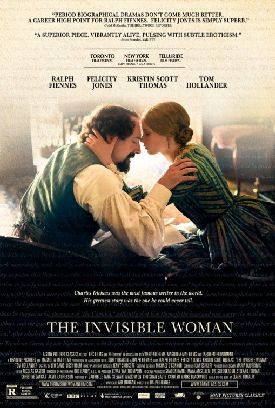Around the World in 80 Days
The point of the 1956 movie adaptation of Jules Verne’s Around the World in 80 Days — which was directed by Michael Anderson but is better known as the work of its producer, the flamboyant showman and third husband of Liz Taylor, Mike Todd — was to show that you could take a Victorian Englishman to any part of the world and he would still be a Victorian Englishman, busily attempting to remake bemused foreigners in his own image. In one way and only one way, Frank Coraci’s remake does something similar. It shows that you can take a Disney movie to any part of the known cinematic world and it will still be a Disney movie, instantly transforming even the most promising material into toxic sludge.
It’s true that in the Todd/Anderson version both the Englishman and the world were by our standards stereotyped — bull-fighters and flamenco dancers in Spain, thugees and a scene of suttee in India (from which David Niven’s Phileas Fogg rescued a young Shirley MacLaine) and wild and warlike Indians in the American West — but they were still recognizable as belonging to the world as it really was in the 1870s. The new version is moved up to 1890, but it might as well be 2090 for all the resemblance it bears to anything recognizable. Or rather to anything recognizable apart from other anti-historical Disney movies.
Gone is Mr Niven’s (and Jules Verne’s) proper English gentleman, known for being “the most punctual man on earth — the cliché (as it then was) of the Victorian empire builder for which the movie had a mocking affection. Mr Coraci’s movie puts in his place a hitherto obscure British TV star called Steve Coogan who must have been chosen for his natural closeness to the Disney ideal of the lovable goofball, for he resembles nothing in nature. This version of the story makes him — could you ever have guessed it? — an eccentric inventor hated by an allegedly hidebound and anti-scientific version of the Royal Society. “This is the Royal Academy of Science; we don’t need to prove anything,” says its corrupt head, Lord Kelvin (Jim Broadbent), who doesn’t believe in scientific progress— or any other kind either.
Yeah, that’s just like the Victorian scientist isn’t it? There are so many things wrong with this travesty of the Victorian era that it would take me the rest of this review just to list them, but all might yet be well if at least the movie were funny. It is not. It is the opposite of funny, at least to anyone with a mental age greater than five. Mr Coraci apparently gave script approval to the movie’s biggest star, Jackie Chan, since the jokes are as lame as they are in most of the movies Mr Chan has made since he left Hong Kong. Here he takes the role of Phileas Fogg’s valet, Passepartout, which was played in 1956 by the Mexican clown, Cantinflas. Cantinflas’s brand of humor may never translated well for American audiences, but Mr Chan’s, which once did, is now a wasting asset. Even the stunts, which used to be the glory of a Jackie Chan movie are now way over-choreographed and rely on artful photography in a way he used to scorn.
They also necessitate an elaborate but shockingly boring sub-plot involving the theft of an allegedly precious jade Buddha that looks like a cheap bricabrac souvenir and Mr Chan’s attempt to return it to the gentle idol-worshipers of his native Chinese village — a plot which naturally involves him in numerous and mostly equally boring fights with a Chinese gang in pursuit of it and him. Meanwhile Mr Coogan’s Fogg is falling for a gratuitous Frenchwoman (Cécile De France) rather than an Indian widow and inventing his way out of difficulties with one Rube Goldberg contraption after another, including a flying machine for which he gets the idea from a chance encounter with the young Wright Brothers (Luke and Owen Wilson) who are inexplicably touring the vast wastes of the American West. Oh, so that’s why they moved the date up to 1890.
If any of this farrago — or perhaps Arnold Schwarzenegger’s staggeringly unfunny and ungubernatorial portrayal of a lecherous Turkish prince who invites our heroes into the hot tub that once, he says, bubbled the bottom of Rutherford B. Hays — seems like a comic inspiration to you, you may like this movie. Otherwise it’s only for the most hard-core Disney and/or Jackie Chan fanatics.
Discover more from James Bowman
Subscribe to get the latest posts to your email.








